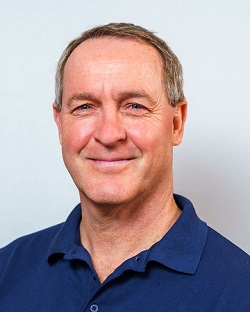Wellness Path Weekly
by Chris Cinnamon
Ideas and Inspiration to Help You:
Move Your Body, Deeply Relax, Achieve Vibrant Health
04 April 2024
The #1 Key to Health and Longevity
Move Your Body
Today's WPW builds upon a NYT article by Dana Smith, PhD, The Seven Keys to Longevity.
We'll start, and finish, with what Dr. Smith identifies as the "#1 evidence-backed secret" to aging well.
Move more.
The "Magic Pill:" Physical Activity
Why does moving the body, what we can call exercise, physical activity, or PA, rise to the top of Dr. Smith's list?
Because decades of research overwhelmingly supports that increasing PA reduces the risk of the chronic diseases. Especially the diseases plaguing modern society and killing humans the most.
What does science say increasing PA protects us against? For starters, the Big 4 Killers:
Beyond that, increasing PA reduces risk of:
And, my personal favorite:
According to Linda Fried, MD, internationally recognized gerontologist and dean of Columbia's Mailman School of Public Health, "Exercise is the closest thing we've found to a magic pill for combating the effects of aging."
Leading us to some questions.
How Much Physical Activity?
To maximize the benefits for health and longevity, all leading medical authorities recommend at least 150 minutes of moderate aerobic exercise each week.
Why? Because that's the PA level research shows delivers substantial protection from chronic disease and death.
Consider the plot below, from the US Dept. of Health and Human Services, distilling that decades of research into a simple line graph.

Adapted from the Physical Activity Guidelines for Americans, 2nd edition. Available at www.health.gov/PAguidelines.
The graph above plots disease and death risk (Hazard Ratio of Mortality) against minutes of physical activity per week. As shown, most of the risk reduction is achieved with 150 minutes of moderate physical activity per week.
That's the "Magic Pill" or the "#1 Evidence-backed Secret" to health and longevity. At least 150 minutes a week of moderate PA.
What's moderate Physical Activity?
You can gauge exercise intensity by how you feel. With moderate exercise:
You can also gauge exercise intensity by heart rate in beats per minutes (HR) using a heart rate monitor. HR for moderate exercise intensity falls within 50% to 70% of maximum heart rate (HRmax).
As a rough rule of thumb, you can calculate your HRmax with this simple formula: 220 - age = HRmax. So in my case, my estimated HRmax is 220 - 63 = 157. So my target HR for moderate aerobic exercise is between 79 and 110.
Examples of moderate aerobic exercise include:
What if I Don't Get In 150 Minutes?
Here's a key point from the research: Sedentary individuals begin to reduce their disease risk with any increase in PA.
As Harvard's Daniel Lieberman, PhD, author of Exercised: Why Something We Never Evolved to Do is Health and Rewarding (2020) (Loved this book!), puts it, "People who exercise the least have the most to gain, from just modest added effort."
So if 150 minutes per week seems daunting, that's OK. Do what you can to build more minutes of PA into your day.
What Kind of PA?
To get the powerful health and longevity benefits of PA, here's wonderfully encouraging guidance for those of you looking to move more:
The type of exercise does not matter. Any PA counts.
That's right. To substantially reduce your risk of the diseases that kill us, just move your body sufficiently to get your heart rate up into the moderate intensity zone, aiming for at least 150 minutes per week.
You don't need to join a noisy gym.
You don't need to grind through that "new, revolutionary" workout.
You don't need to buy that interactive exercise machine, streaming on-demand workouts.
You can do any or all of that, if you want. But you don't have to.
The best approach is: Find PA you enjoy.
For most folks, that means our regular exercise is fun, convenient, easy to incorporate into our week, and, for many people, sharing it with others. That increases the likelihood you'll stick with it.

Enjoying Qigong Class at Chicago Tai Chi.
Tai Chi and Qigong Count Toward Your 150
At Chicago Tai Chi, my students express lots of reasons why they learn and practice Tai Chi and Qigong. For example:
All that brings me joy to hear. Those comments reflect the unique nature of Tai Chi and Qigong as exercise— low-impact, connected, whole-body movement, aiming to relax at ever deeper levels.
As an exercise physiologist, I also like to periodically remind my students that in addition to all those positive experiences, every minute of Tai Chi and Qigong counts toward their 150 minutes per week.
By coming to three 45 minute classes per week, by Zoom or in-person, you've knocked out 90% of your weekly minutes already.
Most of my students regularly exceed 150 minutes/week of moderate physical activity, without even focusing on it.
In doing so, unlike more than 50% of the adult population, they are taking the "magic pill," and substantially reducing their risk of the chronic diseases that kill us most.
That's being on the Wellness Path.
Interested in Tai Chi and Qigong?
Tai Chi and Qigong are wonderful practices to add more minutes of enjoyable PA to your week. At Chicago Tai Chi, we offer a full schedule of Tai Chi, Qigong, and related classes.
Spring Session classes have just started. You can join us from anywhere via Zoom and in-person in Chicago.
For our Spring Session schedule and how to register for classes, click here.
For an example of what you'll learn in our Tai Chi classes, click here.
For a quick intro to Qigong, click here.
That wraps this week's WPW. Time to get up and move these bodies, don't you think?

Chris Cinnamon, JD, MS
Certified Exercise Physiologist
Head Instructor
Author, Tai Chi for Balance and
Tai Chi for Knee Health